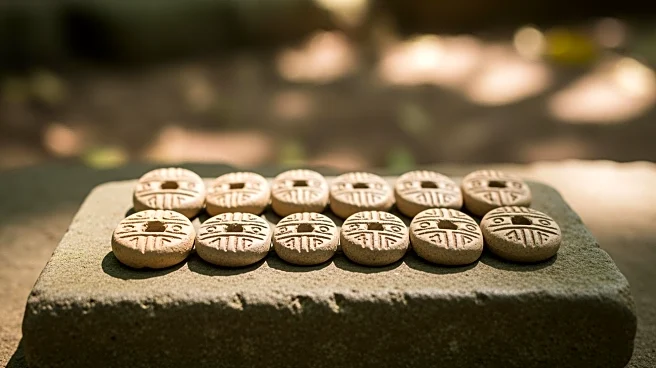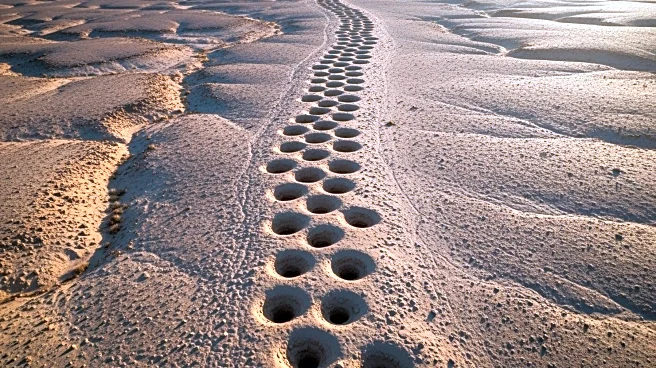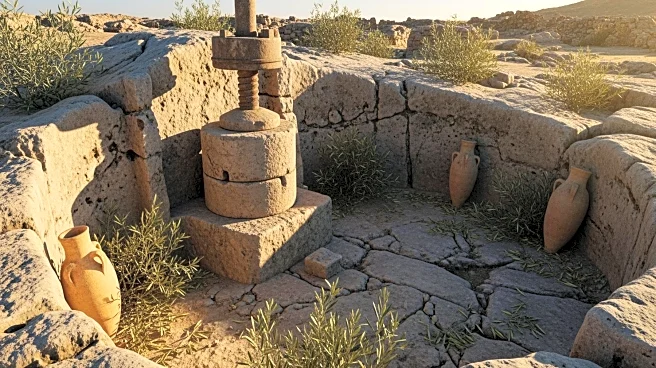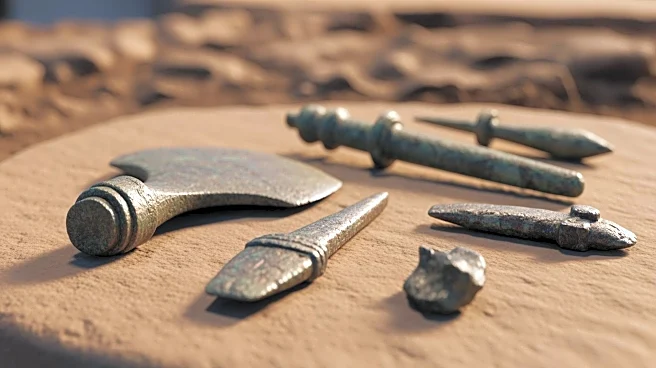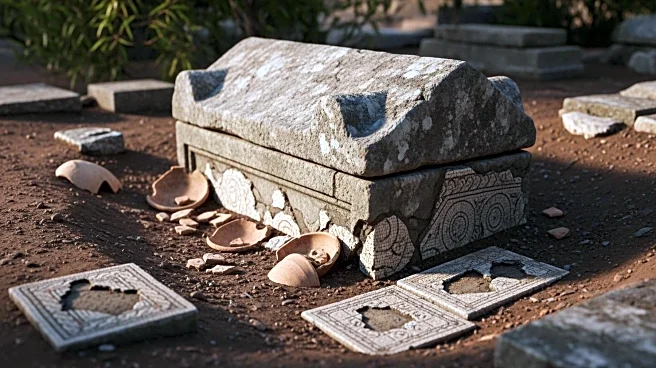What's Happening?
A series of approximately 5,200 holes in the Pisco Valley of the southern Peruvian Andes has puzzled researchers for nearly a century. Recent studies, including drone footage and microbotanical analysis,
suggest these holes were initially used as a marketplace by a pre-Inca civilization and later as an accounting method by the Incas. The site, known as Monte Sierpe, was first documented in 1933 by National Geographic. The holes, organized into distinct sections, may have been used to store and exchange goods such as maize, cotton, and coca. The research, led by Dr. Jacob Bongers, indicates that the site could have functioned as a large-scale accounting device, akin to an 'Excel spreadsheet' for the Inca Empire.
Why It's Important?
The discovery provides significant insights into the economic practices of ancient Andean civilizations, particularly the Incas. Understanding the use of Monte Sierpe as a marketplace and accounting system sheds light on the sophisticated economic mechanisms of pre-Hispanic societies. This research challenges previous theories about the site's purpose, such as defense or extraterrestrial connections, and highlights the importance of integrating Indigenous perspectives and archaeological evidence in interpreting cultural heritage. The findings contribute to the broader field of Andean archaeology and the study of ancient economies.
What's Next?
Further research is planned to explore the numerical relationship between the site's design and the Inca counting system, known as khipus. This could confirm the site's role in collecting tribute from local communities. The team continues to study khipus from Peru to test these hypotheses. Additionally, ongoing radiocarbon dating aims to establish a more accurate timeline for the site's use. These efforts will help preserve and accurately represent local cultural heritage, incorporating Indigenous perspectives.
Beyond the Headlines
The study of Monte Sierpe offers a glimpse into the economic practices of ancient societies that lacked formal currencies or writing systems. The site's strategic location near pre-Hispanic roads and major Inca sites suggests its importance in regional trade and governance. The research underscores the need for narratives that accurately reflect Indigenous heritage and the complexities of ancient economic systems.


